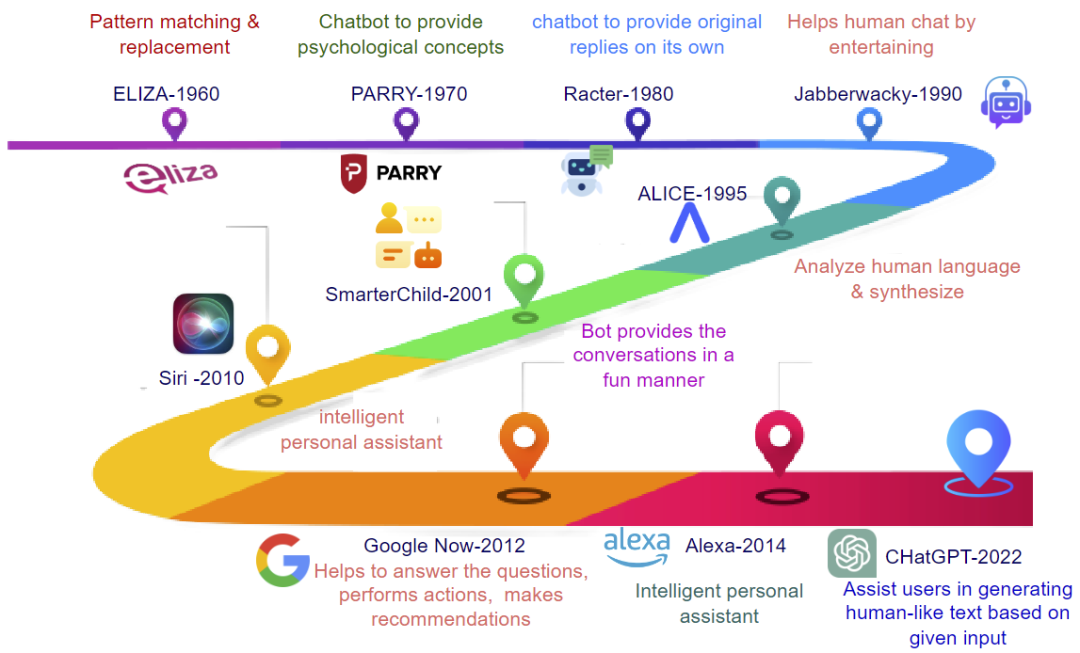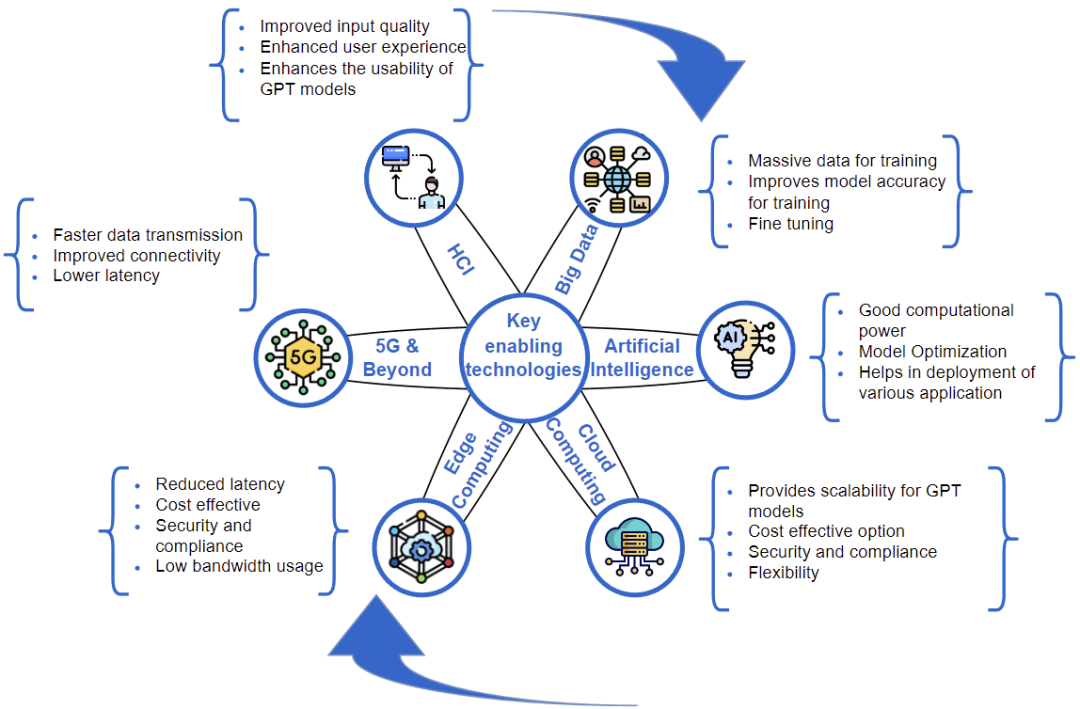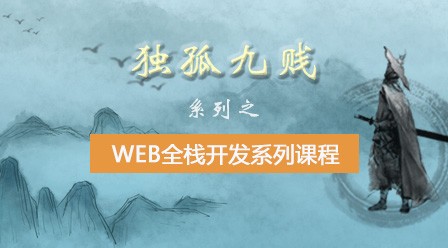夕小瑶科技说 原创
作者 | 智商掉了一地、Python如果机器能够以类似于人类的方式进行理解和沟通,那会是怎样的情况?这一直是学界中备受关注的话题,而由于近些年来在自然语言处理的一系列突破,我们可能比以往任何时候都更接近实现这个目标。在这个突破的前沿领域,是 Generative Pre-trained Transformer(GPT)——专门针对自然语言处理任务设计的深度神经网络模型。它出色的表现和有效对话的能力使其成为该领域中使用最广泛且效果最好的模型之一,吸引了研究和工业界的广泛关注。
在最近一篇详尽的综述论文中,研究人员对 GPT 进行了深入探究,今天我们不聊技术,从计算机以外的领域,本文将回顾与探讨其发展和对相关领域的影响,探索潜在挑战和未来发展方向,从而全面了解这一具有划时代意义的技术。
论文题目:
GPT (Generative Pre-trained
Transformer) - A Comprehensive
Review on Enabling Technologies, Potential Applications, Emerging Challenges, and Future Directions
论文链接://m.sbmmt.com/link/51beafc370abd4f00aa270ee3b626849
GPT 的演变
GPT 是一种通过少量文本输入生成大量复杂机器生成文本的神经网络模型,它能仿照人类语气,以大量文本数据为基础进行预训练,执行多种与语言有关的任务。该系列模型最初由 OpenAI 开发,用于为 ChatGPT 等项目赋予系统智能。图 1 是从创建 Eliza 到 ChatGPT 的几个预训练模型的演变时间表。

▲图1 GPT 路线图
GPT(Generative Pre-trained Transformer)模型是人工智能领域中一种语言模型。它的发展可以追溯到 2017 年 Vaswani 等人提出的原始 Transformer 结构,在 Transformer 架构的成功基础上,OpenAI 从 2018 年开始开发了 GPT 模型,这是基于 Transformer 架构的一个变体,专门针对语言生成任务进行优化。如表 1 中的比较,GPT 系列的演变经历了多个重要的转折点和突破:

▲表1 不同版本的 GPT 系列模型
- 2018年,OpenAI 首次推出了第一版 GPT,该模型能够阅读文本并回答问题。相较于以前的 NLP 模型,使用的无标注数据进行无监督学习,尽管表现出色,但还是被 BERT 等其他语言模型所超越。
- 2019 年,OpenAI 推出了 GPT-2,这是一种更大的模型,参数数量是 GPT-1 的 10 倍以上,在机器翻译、文本摘要等领域都有较好的效果,特别是对于识别语句间长距离关系和进行预测方面,准确度有显著提高。
- 随后推出的 GPT-3 可生成更长的段落,具有 1750 亿个参数,被广泛应用于各个行业和应用领域。由于太过复杂大型,需要通过 API 使用。
- 而近期推出的 GPT-4 是一种多模态大型语言模型,参数量相比之前模型大幅提升,因此能够更准确、更流畅地理解和生成文本。
图 2 展示了 GPT 各个工作阶段。第一步需要有监督的微调,第二步涉及对输入产生最优回复,第三步涉及策略优化和强化学习。在预训练之后,该模型可以针对特定任务进行微调,如文本分类或文本生成。

▲图2 GPT 如何工作的?
影响 GPT 的相关技术

▲图3 GPT 模型的使能技术
如图 3 所示,GPT 是多种技术的集合体,依赖于这些技术:
- 大数据:由企业、个人和机器产生的大量结构化和非结构化数据。它带来了数据分析和决策制定方式的革命。通过大规模数据的训练,GPT 模型采用深度学习和大数据生成自然语言。
- 人工智能:可以通过细化调整、对话生成和自然语言理解等方法来提高 GPT 模型的性能。
- 云计算:提供数据存储和处理能力的可用性,为 GPT 模型的训练和应用提供了必要的计算资源。
- 边缘计算:使 GPT 模型更加高效,因为利用分散在边缘端的计算资源,减少了数据传输的延迟,并提高安全性和隐私保护。
- 5G 及更高版本网络:提供更快的数据速率和更低的延迟,使 GPT 处理更大更复杂的语言模型。
- 人机交互:可以促进 GPT 模型与用户的交互,以提高用户体验。
GPT 模型影响的领域与挑战
GPT模型在不同领域发挥了重要作用,如内容创造、数据分析、聊天机器人、虚拟助手等,因此得到了广泛关注。如图 4 所示,使用这些技术的行业都可以从 GPT 模型中受益,以下来探讨 GPT 模型在不同领域中可能产生的影响和应用。

▲图4 GPT 模型对各种领域应用的影响
教育
GPT 模型可能推动教育的变革,帮助教师更好地设计教学计划、回答学生问题并整合数字应用形成综合课程,从而提高学生的学习体验。具体而言,GPT模型可以应用于以下方面:
- 智能辅导:实现自动化评分和反馈,以便教师更好地关注每个学生的个性化需求,产品公司也可以基于此开发个性化的教育内容来满足每个学生的需求。
- 内容创作:帮助人类理解复杂概念、生成文本和提炼信息,并为我们提供解释和回复,从而促进教学效果的提高。
- 自动测评:为教师提供更多的时间和精力,同时为学生提供更多的反馈和加强练习,提高他们的自信和考试准备能力。
- 提高创造力:在人类的输入和及时的反馈下,帮助学生提高其创造力和学习效果,从而提高工作效率和创新力。
- 研究和写作辅助:提出课题建议、分析写作能力并提供语法和拼写检查,同时,它还能提供相关的参考资源,帮助学生更快、更准确地完成研究任务。
- 语言学习和翻译辅助:帮助学生进行语言翻译,了解语言的语法和结构,同时能够根据学生的学习速度提供个性化的学习课程,促进语言学习和掌握。
然而,GPT 模型在教育领域也面临着一些挑战。首先,虽然 GPT 模型在生成信息方面非常出色,但这也可能让学生产生依赖性,从而影响其批判性思维和问题解决能力。其次,学生的数据安全和隐私保护也是一项非常重要的问题。此外,为了确保提供的信息准确性,需要不断更新和维护模型。
医疗保健
随着现代技术的引入,医疗保健更加高效、便捷、个性化,能够为患者带来更好的治疗效果和整体医疗服务。
- 药物研发:使用大量药物数据库进行分析,可以帮助发现新药物并测试它们的功效和毒性,从而缩短研发周期并减少失败率。
- 诊断:利用患者数据进行分析,可以提供有效的患者护理和改善护理结果,并作为医生的诊断辅助工具。这一技术有助于提高诊断的准确性和速度,也可以节省医疗资源和时间成本。
- 疾病预测:通过分析大量的医学数据进行预测,可以帮助医生进行早期检测和预防性治疗,从而提高治疗效果并降低治疗成本。
- 个性化药物:识别个体数据中的变量模式,能够为患者挑选个性化的药物,提高治疗的个性化程度并提高治疗效果。
然而,应用 GPT 模型在医疗保健领域面临着数据偏移、透明度、安全隐患和临床验证的挑战。因此,评估 GPT 模型在医疗保健领域的优势和风险,并继续监督它们的发展和实施是十分重要的。
企业
新的工具、资源和劳动力安排在快速变化的工作场所和行业中的应用,提高了企业的效率和生产力。数字化为每个行业和领域带来了更大的灵活性、有效性和价值驱动。在此过程中,GPT 模型可以参与的关键步骤包括:
- 可持续性工具:帮助企业评估其可持续发展目标的实现情况,并提高企业的生产效率和客户服务水平。
- 生产过程的更新:提高效率,并帮助用户做出有关资源使用的决策,实现企业的竞争力和环境保护。
- 在餐饮服务、酒店和时尚等行业,GPT 模型可以用于客户服务、个性化推荐和环保资讯等方面。
然而,制定长期战略和公共政策是企业需直面的问题,这将鼓励可持续生产方式的使用,并解决模型可解释性和数据收集等技术挑战。未来,GPT 模型将继续推动技术产品的运作方式、创造新的产品和服务类别,并重构整个商业领域。同时,我们也需要认真探讨其道德与伦理相关问题。
农业
传统农业依靠的是传统知识、老式机械和有机肥,现代农业依靠的是技术先进的机械设备。由于技术的进步,农业设备的尺寸、速度和生产力都得到了提高,从而使更多的土地得到更有效的耕种。在技术方面的改进也有助于农民长期提高产量。
- 数据决策:帮助农民通过分析来自多个数据源的大量数据进行决策,从而提高农作物和畜牧业的产量和效率。
- 精准农业:如传感器、智能灌溉、无人机、自动化和卫星技术,这进一步促进了资源的有效利用。
- GPT 模型还可以用于农作物产量的提高、病虫害的监测和控制以及精准灌溉等方面。
但是,GPT 模型的正确性和可信度取决于数据的质量和解释规则的清晰度,因此有必要确保训练模型的数据质量高且解释规则明确。此外,模型的费用昂贵,而且它不能替代农民的经验和批判性思维能力,因此目前在农业领域还存在着很多挑战亟待解决。
旅游和运输
GPT 的技术可以帮助物流和运输公司更好地了解客户的需求和需求,有助于服务定制并提高客户满意度。可以理解用户需求和偏好,为物流和运输程序提供量身定做的建议。还可以通过提供目的地、预算、旅行持续时间等细节,制定旅行计划。
- 为物流和运输公司提供实时洞见帮助了解客户需求,以及通过 NLP 技术自定义服务,提高客户满意度。
- 可以使用 GPT 模型作为旅游规划工具,提供旅游行程推荐。
- 通过自动化流程和优化运营,可以提高效率、降低成本,实时追踪货物信息,提高库存准确性,优化配送路径和车队管理。
但使用 GPT 模型还面临着数据质量、隐私和成本等方面的挑战。
电子商务
消费者在移动设备上的在线购物变得越来越普遍,电商企业必须提供流畅且方便的购物体验才能留住顾客。因此,在电子商务领域,如何利用 GPT 模型为客户创造更好的搜索体验成为了重要而具有挑战性的研究方向。
- 利用其自动化的聊天机器人功能帮助企业快速回复客户的问题,提升客户使用体验。
- 根据消费者的过往购买、浏览和搜索历史,为其提供商品推荐和个性化购物体验,从而提高销售额和客户满意度。
- 自动生成商品标题、描述和广告语等内容,帮助企业进行产品推广。
- 协助企业进行数据分析和策略规划,提高决策效率。
然而,GPT 模型在电子商务领域的应用还存在一些挑战,比如模型容量有限、数据质量和上下文语境对其应答能力有影响、客户对自动化聊天机器人的接受度不高等。
娱乐
- GPT 模型可以通过提供娱乐内容来帮助人们减轻压力,缓解心理健康问题。
- 可以用于孤独症患者的娱乐,提供舒缓的诗歌、心理治愈语句和有趣的谜语,以及使用语音技术为老年人提供安全的陪伴。
- 互动娱乐:GPT 模型帮助人们与虚拟角色进行互动,可以提供个性化的推荐和内容生成,可用于在线广告、社交媒体、电影和电视行业以及游戏行业。
然而,GPT 模型采集的数据必须均衡,要注重数据的安全性、可靠性和透明性,并且注意避免数据的偏差性和抄袭问题。同时应该考虑用户的隐私和安全保护,降低声音延迟和提高人类话语的理解。对此,应该保持开放性思维,进一步研究并解决相关的技术挑战。
生活方式
GPT 模型可以个性化地为用户提供饮食规划、旅游指南、个性化服装设计、美容建议、食谱推荐、休闲娱乐建议和职业指导等生活方式方面的专业建议。此外,该模型还可以提供适应不同文化和技术变化的培训,以及在可持续发展方面的帮助。
然而,在使用GPT模型提供建议时,需要注意数据可靠性和版权问题,以避免出现误导用户的情况。此外,还需要对极端行为进行定期纠正和测试,以确保模型提供的建议不会导致负面影响。
游戏
GPT 模型在游戏领域的应用或许可以提高游戏的对话和故事情节的质量,创造出丰富、个性化的游戏世界,生成更为真实和引人入胜的角色,甚至可以用来生成游戏内容和发展聊天机器人。而且,GPT 模型还可以分析玩家的能力和技能,借此自动调整游戏难度,并生成 NPC 的对话和其他角色互动,为玩家提供更加个性化的游戏体验。
然而,要想在游戏领域中充分利用 GPT 模型,需要具备强大的计算能力和大量的高质量训练数据,同时还需要控制模型生成的内容是否合适,甚至需要对游戏环境进行访问。这些挑战必须被克服,同时还需要进行结构化数据的训练,才能更好地应用 GPT 模型,为游戏业的进步带来助力。
市场营销
当GPT模型应用于市场营销时,它可以提高内容创作的速度和效率,从而节省时间和人力成本。
- 企业可以使用 GPT 模型自动生成高质量文章、邮件、社交媒体帖子等内容,从而保持内容的一致性和质量,维持品牌形象的稳定性。
- 还可以实现多种自动化工具的效果,如自动回答常见问题的聊天机器人能极大地减轻客服工作量,并提供更优质的服务体验。
- 可以生成个性化广告,吸引到潜在客户的注意力,提高市场营销效果。
- 预测未来的购买行为,为企业预留充足的库存,并及时调整市场策略。
然而,在应用 GPT 模型于市场营销领域时,企业需要注意潜在的挑战。例如,缺乏控制权可能会导致错误的结果,数据偏差可能引起歧视性行为,缺乏透明度会影响模型的可信度,伦理考虑则关系到用户隐私和数据安全。此外,还需要进行适当的规划,以确定最佳应用场景和目标受众,同时需要拥有一支熟练的工作团队,能持续监测以确保所期望的结果。保持技术、法律和伦理等方面的合规性,是采用 GPT 模型的关键,这不仅能够确保企业的经济效益,也能够让企业获得顾客的信任和忠诚度。
金融
金融行业一直是技术应用的领导者,近年来更加注重提高效率、降低成本和提供更好的客户体验。GPT 模型在金融领域的应用表现出了很大的潜力,比如情感分析、金融预测、风险预测和管理、交易策略和客户服务等方面。但同时,GPT 模型在金融领域也面临着一些挑战,如需要大量的计算资源,缺乏可解释性,易受对抗性攻击等问题。因此,GPT 模型在金融领域的应用既有巨大的潜力,也需要谨慎考虑相关挑战,确保其有效和安全的部署。
小结
GPT 模型的优点:
- 快速响应自然语言查询,提高工作效率和准确性。
- 帮助整合多个数字应用程序,为用户提供更加全面的服务体验。
- 在文本生成和对话系统等领域表现出色,帮助人们更加便捷地完成工作。
缺点:
- 在某些情况下,用户可能需要人类的帮助来解决复杂或敏感问题。
- 需要大量计算资源和内存,并且成本较高,这可能会限制一些新兴企业的使用。
- 缺乏人类情感和判断力,在某些情况下可能会出现错误或不准确的结果。
虽然在使用 GPT 系列模型时需要注意其优缺点,并根据具体情况进行选择。但我们不能否认它作为一项极具前途的技术,在未来将会持续发展和创新,探索更广泛的应用领域,这将有助于人们更加方便、高效地进行工作和生活。随着科技的不断进步,我们可以期待 GPT 相关技术能在未来成为人类的重要智能助手,为我们带来更美好的未来生活方式~
以上就是被比尔盖茨选中的GPT技术,是如何演进,又革谁的命?的详细内容,更多请关注php中文网其它相关文章!
本站声明:本文转载于:51CTO.COM,如有侵犯,请联系admin@php.cn删除






































 PHP直播课
PHP直播课















